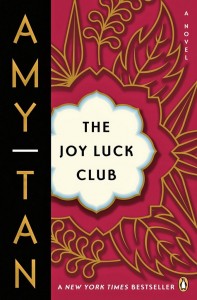Suggested Reading for Dictee: The Joy Luck Club
by Enito Mock
Good Evening Colleagues,
I would like to first thank everyone for a very meaningful class discussion yesterday. I really enjoyed hearing everyone’s insights about the text and their thoughts (one great thing about grad school). Following off the theme of collective memory, I would like to suggest some books that I felt connected like Dictee in terms of the theme of collective memory. Many of you have probably read the text or saw the movie or both.
The Joy Luck Club
I remember when I saw this film as a child. This was probably the first Asian American film I had ever watched. The Joy Luck Club tells 16 interwoven narratives about the relationship between Chinese immigrant mothers and their American raised daughters. The book is composed of four parts with the first talking about the mothers: Jing-Mei, Lindo, Ying-ying and An mei, all who make up the Joy Luck Club in San Francisco, CA. They tell their stories about their lives in China, their mothers and life in America. They all worry that their daughters will lose their cultural heritage and become immersed into the American life, losing their Chinese heritage as a result . The second set of stories are of their daughters: Waverly, Jing Mei, Lena and Rose – who talk about their relationship with their mothers. Here is where you find the disconnected relationship between mother and daughter, both who lived different experiences and lives. The daughters find their mother’s experiences irrelevant and old school, that living in China is nothing like living in America. The third section continues with the lives of the daughters and their problems with careers and marriage. This section brings together a great lesson: that regardless of where we lived, or worked, or our relationships, we can learn from one another. Just because we lived in a different time, in a different country, it doesn’t mean our memories and lessons are irrelevant. We can still learn from one another and that is what we see in the fourth and final section where the mothers and daughters finally came together in mind, spirit, and understanding. They learned from one another and understood their experiences to be relevant. This text is a fine example of a collective narrative and I share this with you not only because this is one of my favorite text but because it teaches us a very important but simple lesson…
We are not so different after all…


